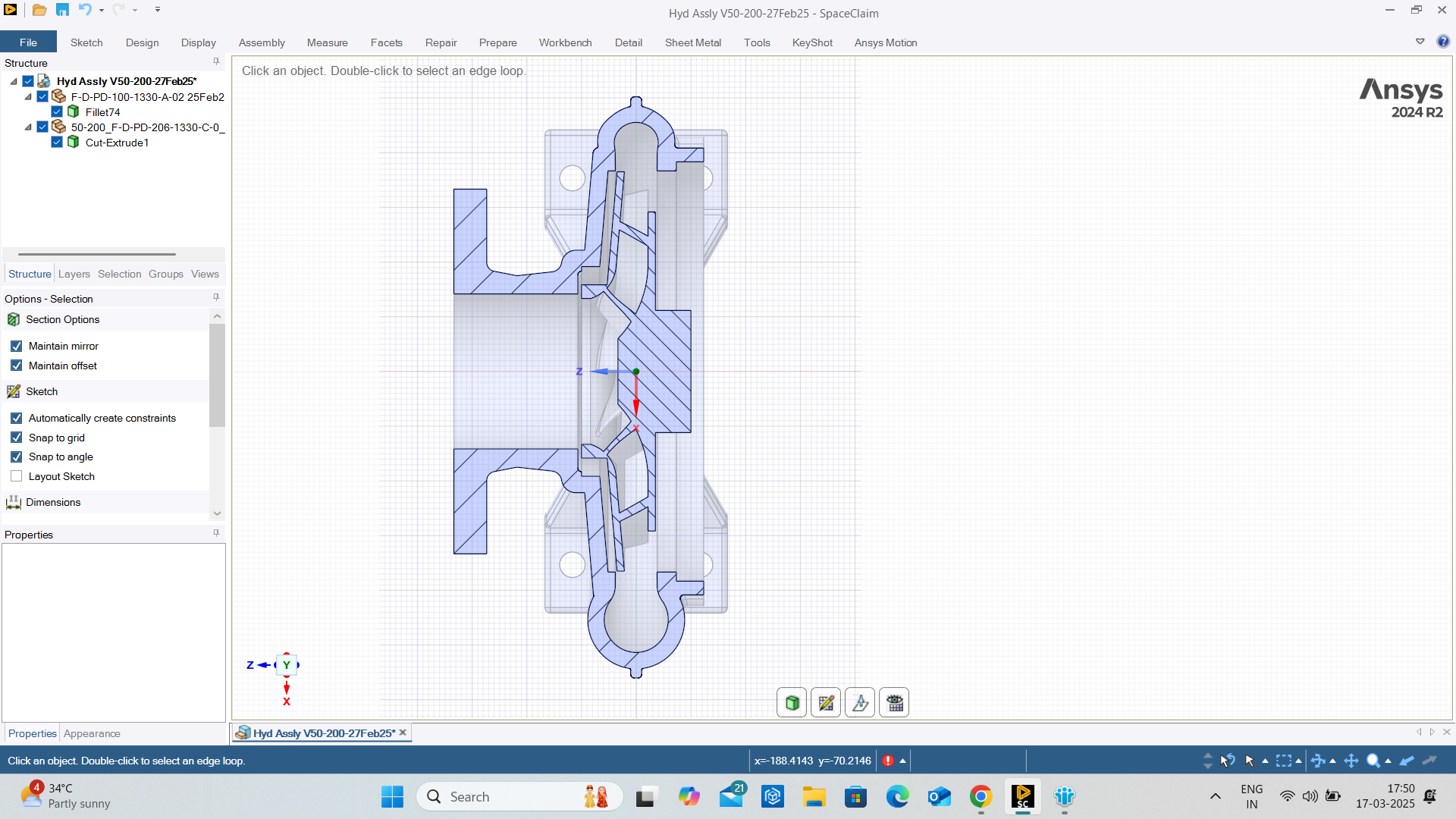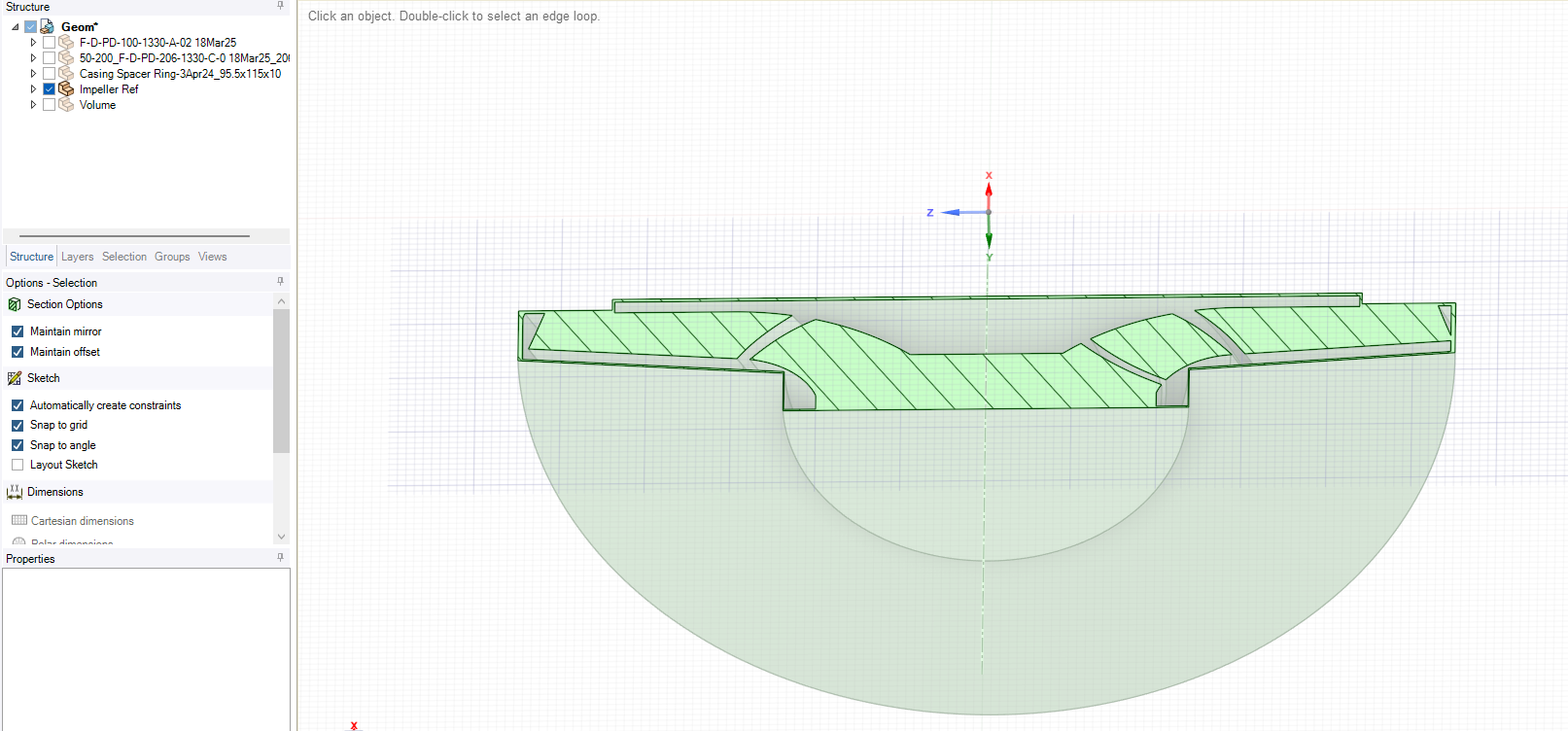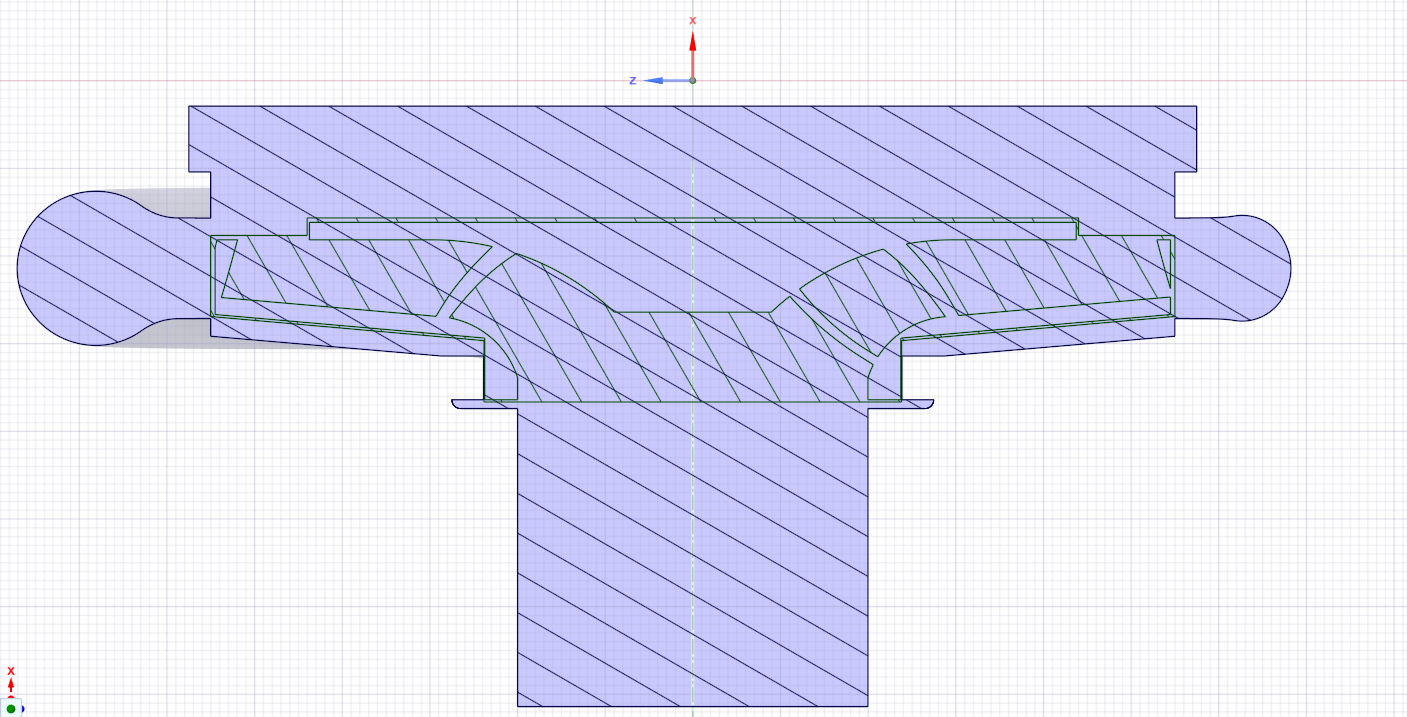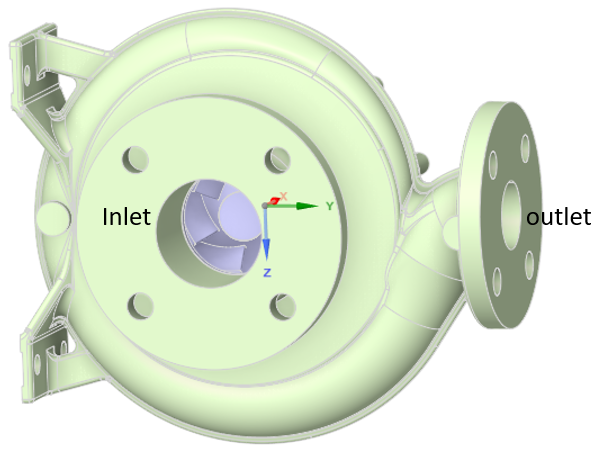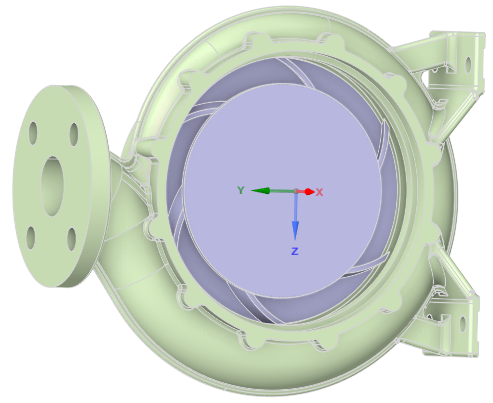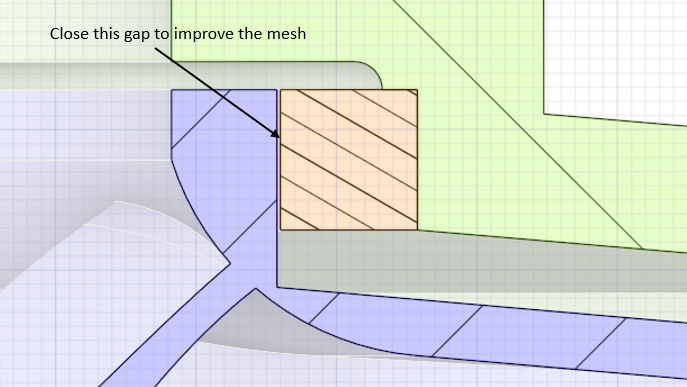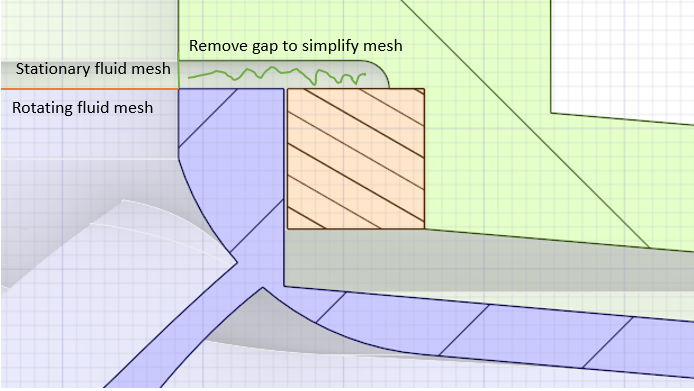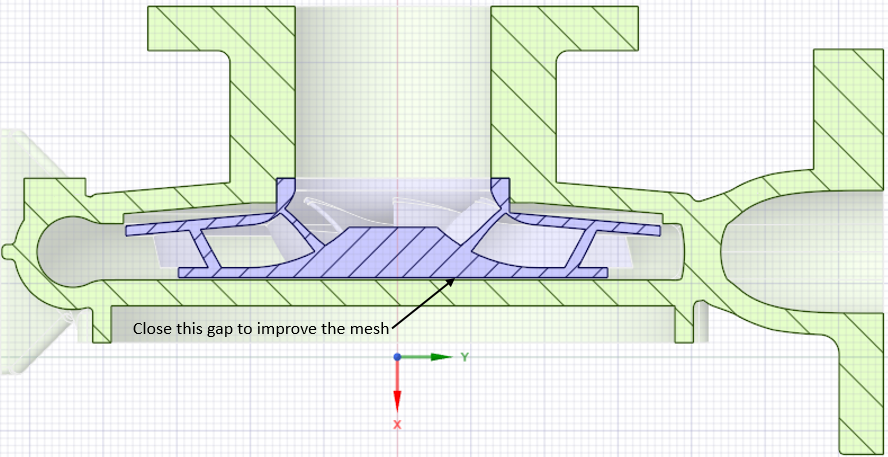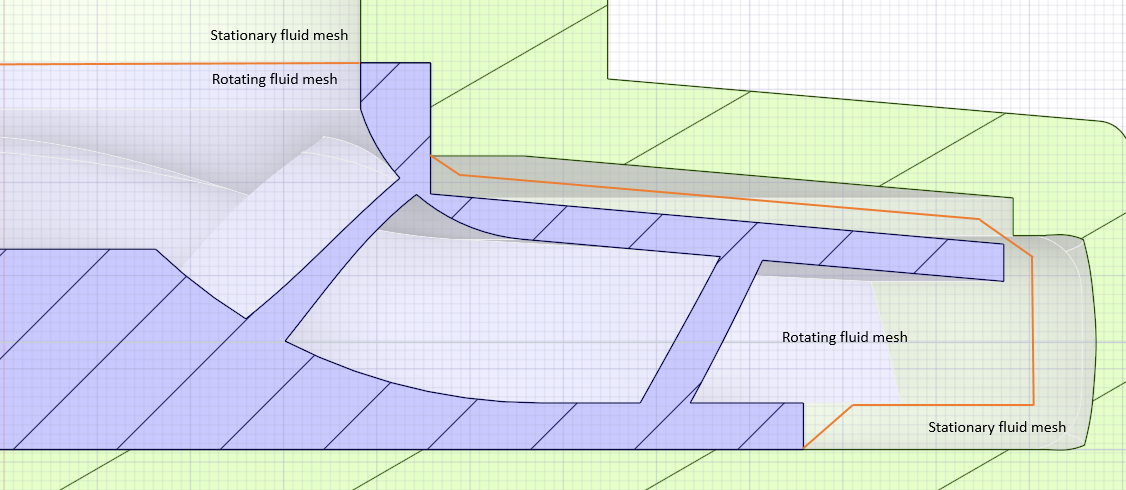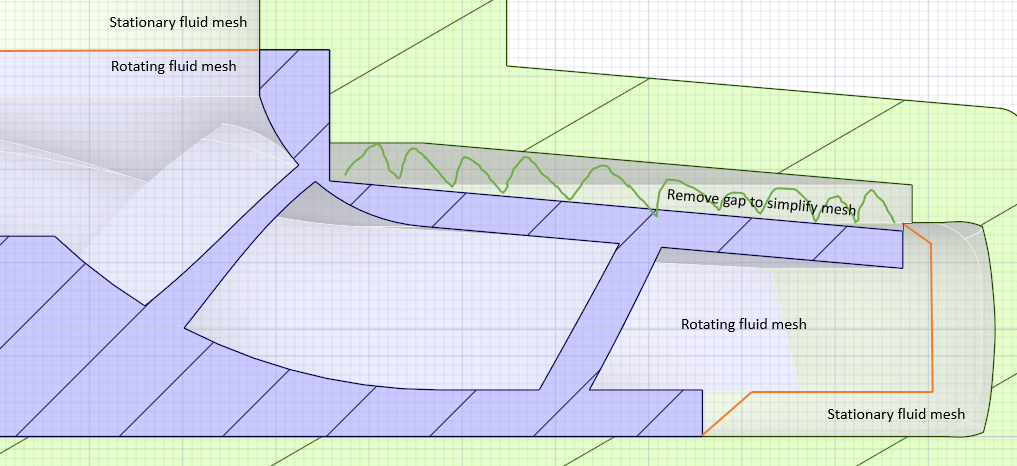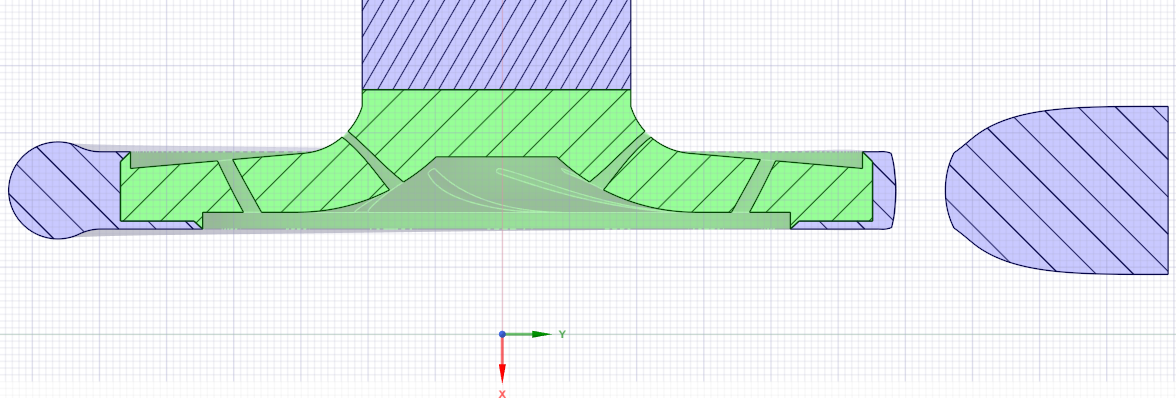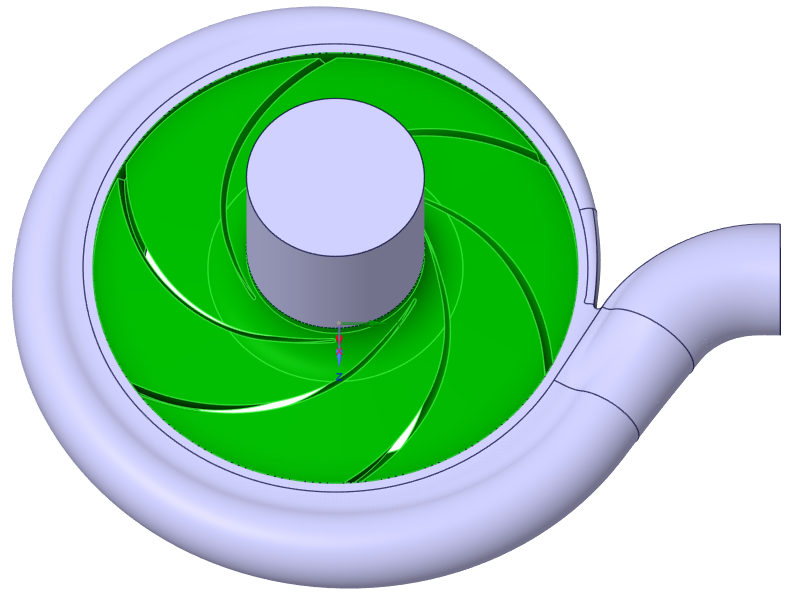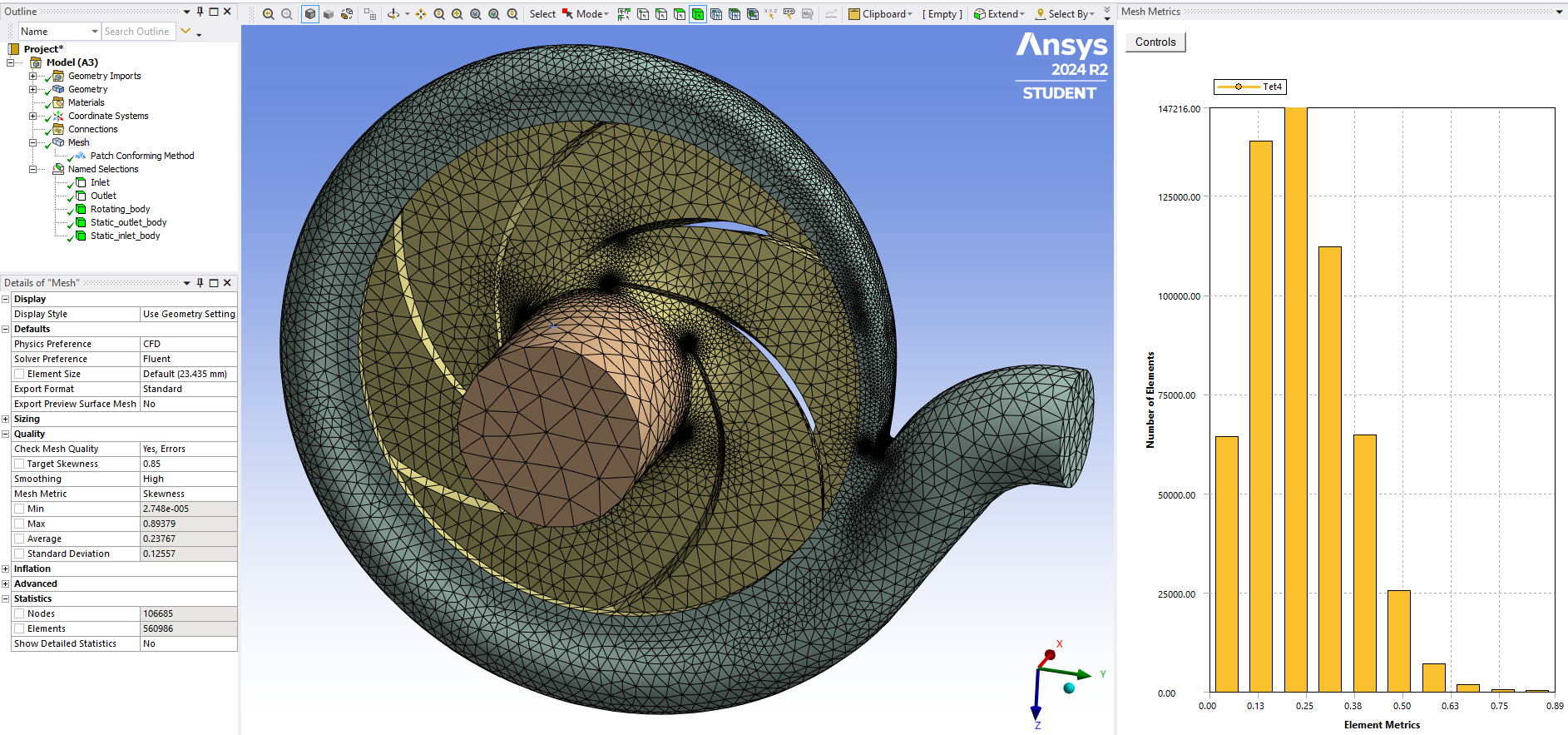TAGGED: ansys-spaceclaim
-
-
March 14, 2025 at 10:44 am
lokeshk
SubscriberI have a solid 3D solid cad model of centrifugal pump that includes both impeller and volute. How should preprocessing be done in ansys spaceclaim 2024R2 to take this cleanup model to the ansys fluent to do the MRF approach sinulations? Give me the step-by-step exact approach for both impeller and volute to create the fluid domain Can you please explain in details only for the fluid flow analysis with no CHT can anyone Give me a detailed explanation for how to do the preprocessing
-
March 15, 2025 at 2:15 pm
peteroznewman
SubscriberRead this Ansys Help page: https://ansyshelp.ansys.com/public/account/secured?returnurl=/Views/Secured/corp/v251/en/flu_th/flu_th_sec_mrf.html
The basic steps in SpaceClaim are to hide the Impeller and on the Prepare tab, use the Volume Extract button to create the volume body inside the volute. Turn on the impeller and on the Design tab, use the Combine tool subtract the impeller from the volume body to get the total fluid volume. Note that by default the interference solid (identical to the impeller) is created so you must delete that to end up with just two bodies to transfer to Fluent.
Construct surfaces to split the total fluid volume into two pieces near the half-way point between the outer faces of the impeller and the inside faces of the volute. Now you have the rotating fluid body and the stationary fluid body.
-
March 17, 2025 at 6:16 am
lokeshk
SubscriberWhat should I do if both impeller and volute fluid domains are overlapped with each other?
-
March 17, 2025 at 11:57 am
peteroznewman
SubscriberIf the impeller can rotate, it does not overlap with the volute. Please reply with an image of a cross-section through the axis to show the impeller and volute.
-
March 17, 2025 at 12:22 pm
-
March 17, 2025 at 12:24 pm
lokeshk
SubscriberIn practical there is no overlap. However once after creating the enclosure region there is a overlap between impeller enclosure and volute fluid domain.
-
March 17, 2025 at 1:52 pm
peteroznewman
Subscriber -
March 19, 2025 at 11:03 am
-
March 19, 2025 at 11:05 am
-
March 19, 2025 at 2:08 pm
peteroznewman
SubscriberIt will be easier for me to help if you reply with a link to the .scdoc file in your Google Drive or other online file sharing site such as OneDrive or Jumpshare. If using Google Drive, create the link so that anyone with the link can download the file.
-
March 20, 2025 at 4:35 am
lokeshk
SubscriberHello Sir. Kindly use this link to access the model https://drive.google.com/drive/folders/15IDQtfsxN8lz7r-m5JoRr8GDQiKUFTSv?usp=drive_link
-
March 20, 2025 at 12:28 pm
peteroznewman
SubscriberHello Lokesh,
I looked at your geometry and note there is a missing part. The impeller and volute show the inlet and outlet.
But on the back side of this image, there is a missing cover that closes the back of the volute. Please add that part. I don’t know how close it comes to the impeller.
In the cross-section below, you can see how the missing part is needed to define a stationary wall on the fluid volume.
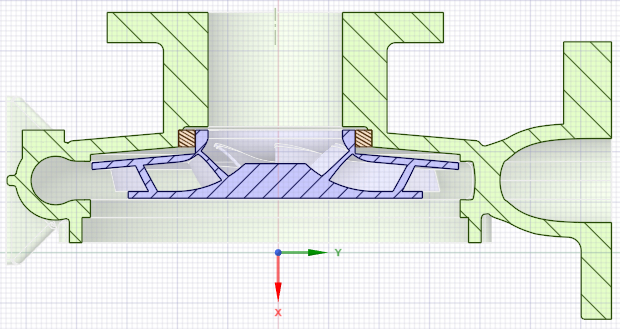
In orange is the casing spacer ring. In reality you need clearance to allow rotation but no significant airflow passes through that gap and you will get a better mesh if you make the spacer ring ID the same diameter as the impeller hub.
Now you will create the rotating fluid body at the surfaces created by rotation of the orange lines.
Another simplification to the mesh is in the gap above the ring which could be deleted.
Making those changes, it makes sense to merge the ring into the volute solid body. I also deleted the big hole in the volute where the cover would be bolted in and get this assembly.
Here is the final result after pulling the impeller bottom face down 1 mm and fixing a 0.05 mm step in the volute cover.
-
March 21, 2025 at 4:26 am
lokeshk
SubscriberIf I close the gaps, how can I create the fluid domain?
-
March 21, 2025 at 4:27 am
lokeshk
SubscriberIf possible, can you share the cleaned model with fluid extraction for both impeller and volute
-
March 21, 2025 at 2:08 pm
-
March 21, 2025 at 3:56 pm
lokeshk
SubscriberCould you please share me the file with me ..?cleaned up model is more than sufficient
-
March 21, 2025 at 3:58 pm
lokeshk
SubscriberIt seems this is pretty much new approach which you followed.Thos is not the approach I used to create the fluid domain.
-
March 21, 2025 at 4:12 pm
peteroznewman
SubscriberI am not an expert at CFD. A better mesh might be found by using Fluent with Fluent Meshing. I didn't yet include any inflation layers. However clean geometry is required for getting an acceptable mesh. Please tell me the approach you used to create the fluid domain.
-
March 21, 2025 at 4:42 pm
lokeshk
SubscriberI have shared one file with you right in that way .I have selected all the external faces of volute and using volume extraction feature ihace created the stationary fluid domain
-
March 21, 2025 at 4:44 pm
lokeshk
SubscriberFor impeller using the reference which created throughout the impeller and using Boolean operation I have subtracted the impeller by keeping volute fluid domain as the source
-
March 21, 2025 at 5:54 pm
peteroznewman
SubscriberPlease show the skewness element quality of the mesh on your fluid volume.
-
March 21, 2025 at 6:16 pm
lokeshk
SubscriberMax skewness is 0.7.it is good to go for the analysis as pery knowledge.
-
March 21, 2025 at 6:17 pm
lokeshk
SubscriberIs it possible share the file for my reference and learnings
-
March 21, 2025 at 6:56 pm
peteroznewman
SubscriberHere is the SpaceClaim 2024R2 document with three solids that use Shared Topology to mesh the two static and one rotating fluid bodies. https://jumpshare.com/v/Iqri2Rqp6OxtZg9LrGOw
If you post a question in the Fluids channel to get help with Mulitple Reference Frame method, please add a link to that New Discussion at the end of this discussion so I can follow along with this model.
-
March 22, 2025 at 12:52 am
lokeshk
SubscriberSure will do that.Thanks for the file
-
- You must be logged in to reply to this topic.



-
3044
-
971
-
858
-
852
-
792

© 2025 Copyright ANSYS, Inc. All rights reserved.

